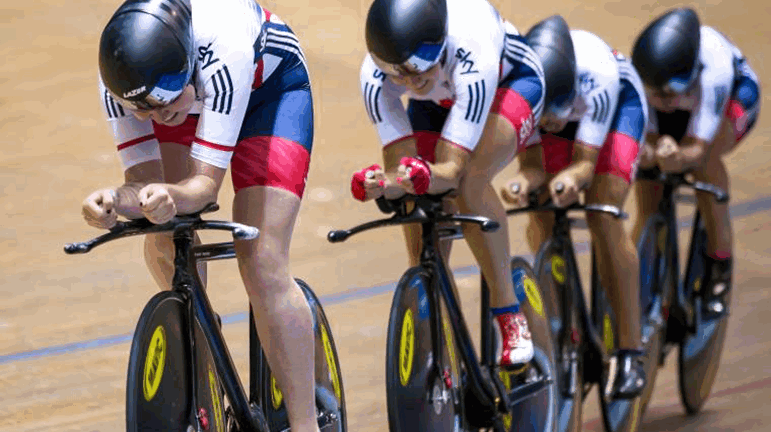Like me, you are probably immensely proud and inspired by the performance of Team GB at the Rio Olympics. To finish second in the medal table behind the USA (with a population that’s five times larger than ours) and ahead of China (with a population that is almost 20 times larger) is a remarkable achievement. What’s more, to be the only team in history to have increased their medal haul after hosting the Games, is hugely impressive.
So what’s inspired and driven such unprecedented success?

Well, apart from the world-class talent and dedication of our athletes, there is no doubt that targeted funding has played a key part. UK Sport has received significant support – just over £274 million – from the National Lottery. But money alone does not buy you gold. There is another equally important (but largely unheralded) consideration that has weighed heavily in the balance of success…
Incremental Innovation.
When the difference between gold, silver and bronze can be measured in fractions of a second, it is the combination of small factors that make the difference. Intensive personal training, bespoke dietary regimes, advanced coaching science, close medical and physiotherapy support, deep psychological preparation, painstaking competitor analysis and increasingly…incremental innovation.
The velodrome is a typical case in point. This was the setting for some of our greatest successes. Every single member of the indoor cycling team came away with at least one medal – an unparalleled achievement. But what gave them such a decisive edge? The answer is a surprising mix of factors – here are just a few of them:
- Helmets with blackened visors (similar to those worn by fighter pilots). Computer designed to maximize aerodynamic efficiency, each helmet is also fitted with black tinted visors. Contrary to expectation, tinting is used to intimidate rivals; not reduce glare.Being able to observe the opposition whilst denying them the chance to make eye contact can deliver a serious psychological advantage. Where hundredths of a second often separate gold from silver, that mental edge makes all the difference.
- The science of sustained exercise. Immediately after each race, cyclists step straight onto another ‘warm-down’ cycle and start pedaling. This contrasts dramatically with past practice of resting and massaging tired limbs. However, the evidence for continued activity is irrefutable. Sustained low-level exercise mitigates ‘Delayed Onset Muscle Soreness’ (DOMS) – the debilitating fatigue that can wreck performance. So leading sports therapists have developed a regime that works off the accumulation of lactic acid in muscles. When athletes are often competing in multiple events on the same day this, too, makes the golden difference.
3. Data analytics have also reached a new pinnacle of sophistication. Heart and pulse rates, lung capacity and efficiency, continuous blood sugar levels, blood biomarkers (such as Vitamin D), Hormone level monitoring as well circadian rhythms and sleep cycles – everything that can impact an athlete’s performance is studied with clinical precision.
- Strategy planning software. All possible race situations are scenario planned. The strengths and weakness of rivals are captured on video, computed and minutely analysed. Nothing is left to chance in the search for that technology-driven edge.
- Wind tunnels. This is where materials science meets aerodynamic wizardry and human dynamics. The latest lightweight components – carbon frames, pedals, wheels and handle bars – are rigorously tested in wind tunnels to maximize aero-efficiency. Also to optimize the total package, design engineers search for the most drag efficient riding position – man and machine in perfect symmetry.
- Special race suits. Men in Lycra may be ridiculed by our tabloid press – but not at the Rio Olympics. The suits worn by our male and female riders use hi-tech fabrics and are all handmade. They are tailored to exact personal specifications using panels of different material to improve the rider’s contour-hugging aerodynamics.
Those of you who are F1 fans might have guessed that some of these techniques have been lifted from the highest levels of motorsport. And you would be correct. McLaren, for example, has been involved in designing the boats for our medal-winning rowers.
That is the massive value of technology transfer. And, interestingly, this value is not all one-way. Sir Chris Hoy has recently transferred his track-craft skills to the motor racing circuit. Earlier this year, he raced at the 24-hours of Le Mans where he proved just as determined and successful.
So what are the takeaway messages for businesses from all of this Olympic success?
- Look outside your industry for innovation skills you can deploy into your sector. Don’t assume that everything has to originate from within your specialized sector – frequently, the most inspired ideas come from lateral thinking.
- When you’ve got your team (employees) performing at their best, focus on delivering incremental innovation to give them the best chances of raising their game. With the right resources and support they will raise their performance and yours… that’s the Rio effect.
